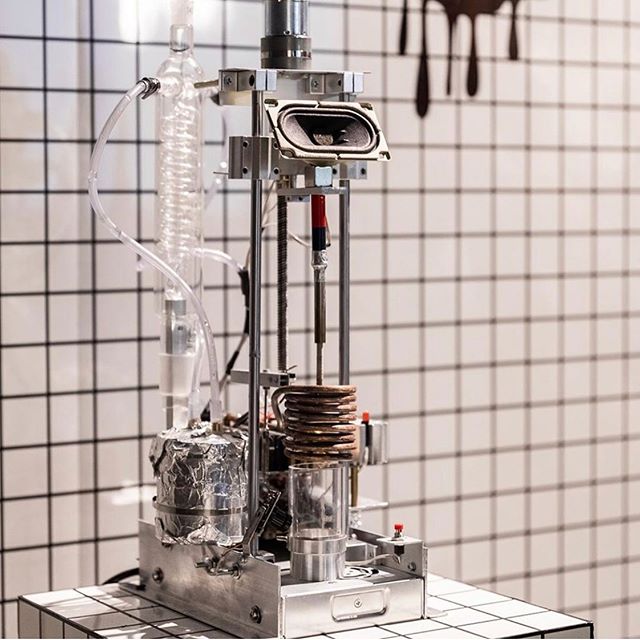
OCTOBER 5 – NOVEMBER 4 / SMALL EXHIBITION HAL
On October 5, the Zarya Center for Contemporary Art will open the multimedia installation, Guest, by one of the most world-renowned Russian artists working in the field of science-art, Dmitry Morozov, better known by his pseudonym, ::vtol::.
Morozov's practice explores sound, light, society, the internet and all the possible means man has of mastering the world around him. In Vladivostok, the artist will present a kinetic, electromagnetic sound installation, dedicated to the Sikhote-Alin meteorite, which fell in the Far East in 1947 According to the artist's concept, the cyclical system models the moment the meteorite “arrived” on earth – an extremely elusive and rare event.
As the artist explains, “The main impetus and inspiration leading me to the creation of this work was the addition to my geological collection of a few individual fragments of the Sikhote-Alin meteorite, which landed in the Far East in 1947 This meteorite was unique for a number of reasons. For starters, it was the largest iron meteorite in recent history. Witnesses of its descent were myriad, including the artist Petr Medvedev, who was painting en plein air at the time of the fall and was able to capture his experience on canvas. The resulting painting was very popular in the USSR. This is the most studied of any of the objects that have ever fallen to the earth, and yet tiny shards and individual fragments can still be found around the point of impact.”
“The unbelievable allure of these rarest of ‘guests’ from the cosmos immediately inspired me to develop an artistic research project, involving some of what I find the most interesting trends in the sphere of technological art: natural and artificial electromagnetism, work with sound, robotic automatized systems, geology and astrophysics. Each of these aspects are not only a means for reaching a unified artistic expression, but also a powerful medium, in and of themselves, forming a synergy of individual elements within the work. The realization of this work is not limited to the creation of the object itself, but also includes taking the piece to the Meteorite Village, not far from the site of impact in the hills of Sikhote-Alin.”
“The culmination of the project is the setup of a functioning installation in one of the craters left from the crash of the pieces of meteorite fragments. This offers its own means of recreating the moment of impact directly on the spot where the meteorite hit the earth. This kind of journey can rightly be thought of as a pilgrimage/research trip, together alongside the filming of a short documentary film dedicated to the whole process.”
Dmitry Morozov (born 1986, Moscow) realizes his artistic ideas through technological genres like robotics, sound art, and science art, exploring the themes of chaos and self- organizing systems, and analyzing social, biological and physical phenomena. The artist also designs and creates experimental musical instruments and modular synthesizers. He has participated in the 4th Moscow Biennale of Contemporary Art, the Archstroyanie Festival, The Night of New Media, CTM/Transmediale (Germany) and Ars Electronica (Austria.) His works have been exhibited at leading institutions for contemporary art, including the NCCA (his solo exhibition “Interface of the Ongoing,” was on view through September 29), MMOMA, Manezh, the State Hermitage Museum, Laboratoria Art&Science Space, Electromuseum, the Polytechnical Museum, the Garage Museum of Contemporary Art, ZKM Zentrum (Germany), the Boulder Museum of Contemporary Art (USA), and the National Taiwan Museum of Fine Arts (Taiwan). He was previously featured in Vladivostok in the group exhibition “Misadventures of Discovering” at the Hlebozavod Center for Contemporary Culture. He is the award winner of the Sergei Kuryokhin Prize (2013), Prix Cube (France, 2014) and also received honorary mentions at VIDA 16 (Spain, 2014) and Prix Ars Electronica (Austria, 2015, 2017).
This work was produced with funding from a grant from NOVA ART, received as part of the NOVA ART CONTEST.